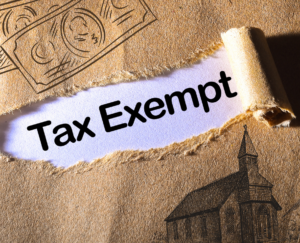Filing for designation as a tax-exempt business — exempt from federal taxes on the net profits of your organization — is easy, if your organization meets the qualifications for this designation. To become a 501(c)(3) tax-exempt nonprofit, simply complete the IRS form 1023.
Now, I hope you laughed, snorted, or cracked a smile when you read that because everyone knows “just complete ______ form” is never as simple as it sounds. There are many details to work out before filing and you want to ensure that you have the right information on hand before filing.
While you may end up preferring to work with a professional to dot the i’s and cross the t’s, this article will outline some important details on what you must do and information you will need in order to become tax-exempt.
Before filing
According to the IRS, the term “nonprofit” is a state law designation, and not necessarily synonymous with a federal tax-exempt business. Some items to do before filing include incorporating and applying for an Employer Identification Number (EIN).
Becoming a nonprofit in your state and ensuring you have articles of incorporation on hand for when you file Form 1023 are two of the preliminary items to take care of. Keep in mind that once you file your articles of incorporation, your organization will become tax-exempt from that date as long as you file Form 1023 within 27 months of incorporation. (Otherwise your organization will be tax-exempt from the day your Form 1023 was submitted, unless you can prove to the IRS you were unable to.)
Your articles of incorporation should include a clause on the purpose of your organization’s formation that shows why it should be classified as tax-exempt, a clause on how the assets will be distributed should the organization face dissolution.
You also must apply for an EIN for use as a nonprofit business by filing Form SS-4 with the IRS, whether you have employees or not. Through a relatively simple process, the EIN you are given will be used when you file Form 1023.
If you want to remain an unincorporated organization or a trust, additional rules may apply, and you will need assistance in completing Form 1023.
Which form to file?
If your non-profit has less than $50,000 in annual receipts and $250,000 in total assets, you can fill out the online, “streamlined” form, 1023-EZ. As its name suggests, it is an easier form, shorter, and less expensive form to file. To determine eligibility for filing this form, you can fill out Form 1023-EZ Eligibility Worksheet. Most nonprofits however, will file Form 1023.
Filing
The 11-part Form 1023 will ask you for information on:
- Your basic identification (here’s where you need your EIN)
- An attachment of your articles of incorporation and bylaws
- The “who, what, when, where, how” of your organization’s activities
- The founders and operational leaders and their earnings
- The people who receive goods and services from your nonprofit and what they receive
- All relevant history of your organization
- The types of fundraising you are engaged in and any connections to politics
- The financial details—balance sheets, projections, etc.
- Your classification as public or private
- A schedule of your operations (dependent on organization type)
Other notes
You want to ensure that you have any documentation or information about your organization on hand when completing this form. Additionally, you need to pay a fee upon submission of the Form 1023. Current rates can be found on the IRS website.


